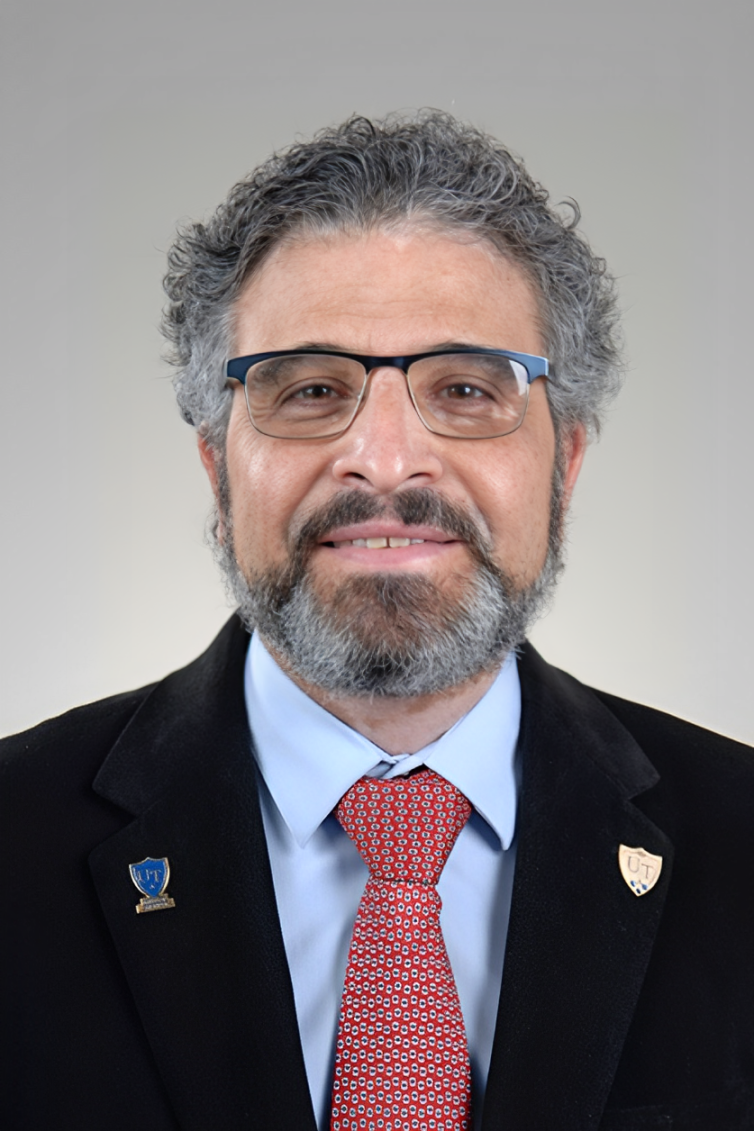Hossein Elgafy1, Jin Ye Yeo2
1Department of Orthopaedic Surgery, University of Toledo Medical Center, Toledo, OH, USA; 2ASJ Editorial Office, AME Publishing Company
Correspondence to: Jin Ye Yeo. ASJ Editorial Office, AME Publishing Company. Email: asj@amegroups.com
This interview can be cited as: Elgafy H, Yeo JY. Meeting the Editorial Board Member of ASJ: Dr. Hossein Elgafy. AME Surg J. 2025. Available from: https://asj.amegroups.org/post/view/meeting-the-editorial-board-member-of-asj-dr-hossein-elgafy.
Expert introduction
Dr. Hossein Elgafy (Figure 1) is an orthopedic fellowship-trained spine surgeon working at the University of Toledo Medical Center in northwest Ohio, USA. He specializes in comprehensive surgical care of the spine. He is American board-certified in orthopedic surgery, a fellow of the Royal College of Physicians and Surgeons of Canada and the Royal College of Surgeons of Edinburgh, United Kingdom. In 2019 he completed a master's degree in business administration from the University of Toledo expanding his knowledge in management.
He joined the faculty of the University of Toledo in 2006, and currently holds the position of tenured Professor of Orthopedics and Chief of Spine, Vice Chairman of the Orthopedic Department and Co-Director of the E-CORE Biomechanical Lab at the University of Toledo.

Figure 1 Dr. Hossein Elgafy
Interview
ASJ: What inspired you to specialize in orthopedic spine surgery?
Dr. Elgafy: During my orthopedic residency in Vancouver, Canada, at the University of British Columbia, I had outstanding spine surgery mentors, Dr. Marcel Dvorak and Dr. Charles Fisher, who were both outstanding surgeons and great teachers. With their mentorship, I became interested in spine surgery. I found the complexity of spine pathology and the fine surgical skills required to perform spine surgery to be challenging and stimulating, and it was rewarding when my patients had good outcomes and improvement in their quality of life.
ASJ: You also completed a master's degree in business administration. How did earning an MBA influence your leadership approach in your practice?
Dr. Elgafy: In 2019, after a long career in medicine, I felt the need to get outside of my comfort zone and expand my knowledge in business and leadership. In addition to obtaining my degree, I was honored to be the 2020 recipient of the Owens-Illinois Student Pacemaker Award from the University of Toledo College of Business. My MBA study has influenced my traits and characteristics as a leader, and I have been applying the following:
- Visionary: Mobilizing medical students and residents toward our vision.
- Affiliative: Creating harmony by connecting people and always putting people first.
- Democratic: Value people’s input and obtain commitment through participation and always seek other people’s opinions and feedback.
- Coaching: Building long-term capabilities by aligning individual performance and organizational goals.
ASJ: As Co-Director of the E-CORE Biomechanical Lab, what are some of the most exciting research projects you have been or are currently involved in?
Dr. Elgafy: With the late Professor Vijay Goel, Endowed Chair & McMaster-Gardner Professor, Co-Director, Engineering Center for Orthopedic Research Excellence (E-CORE), we conducted multiple studies, including a study on the alterations in the biomechanics of the spine comparing midline-sparing laminotomy surgery to traditional laminectomy. We found that the midline laminotomy surgery induced much fewer alterations in the biomechanics of the spine compared to traditional laminectomy. There was higher intradiscal pressure and motion for the laminectomy model, which meant the load on the disc was higher as compared to the midline sparing, which may lead to long-term disc degeneration. The findings of the study showed that midline sparing laminotomy may prevent disc collapse due to reduced disc loading without sacrificing the opening of the spine foramina, as compared to the traditional laminectomy. Furthermore, we conducted and published multiple biomechanical studies discussing the biomechanics of the sacroiliac joint.
ASJ: What are some of the biggest challenges/gaps in surgical care for the spine, and how do you see them being addressed?
Dr. Elgafy: We have spent the last few decades improving spine surgical techniques, hardware, and technology. Now, the new wave in spine surgery is bone health. How do we improve bone health before we take patients into surgery? It is an important question as we look to improve surgical outcomes and avoid patients having a second or third surgery. We recently published a study of more than 500 patients who underwent lumbar spinal fusion surgery at the University of Toledo Medical Center between 2009 and 2017 and found that diabetic patients were three times more likely than those without diabetes to experience pseudoarthrosis after spine fusion. Diabetic patients were also more than two times more likely to experience additional degeneration in adjacent segments of the spine after a spinal fusion procedure, another complication that usually requires extensive revision surgery (1).
ASJ: As a tenured professor and department leader, what do you find most rewarding about training the next generation of orthopedic surgeons?
Dr. Elgafy: Throughout my career in orthopedics, which spans over 39 years, I have always enjoyed and valued working and teaching medical students and orthopedic residents. The orthopedic residency program is five years long. It is a great feeling when you see how our residents improve their orthopedic knowledge and surgical skills, gain confidence, and grow during that time. As a surgeon and teacher, there is nothing more rewarding than contributing to shaping and influencing the future when our residents graduate and go out for their jobs, helping and improving the quality of life for thousands of patients across the country.
ASJ: As an Editorial Board Member of ASJ, what are your expectations and aspirations for the journal?
Dr. Elgafy: ASJ will continue to tap into the vast knowledge in orthopedic and spine surgery. ASJ encourages and seeks more manuscript submissions to be reviewed and publishes the most valued research to improve our knowledge, surgical techniques, and clinical outcomes.
Reference
- Wilson C, Czernik PJ, Elgafy H, et al. Diabetes increases risk of lumbar spinal fusion complications: association with altered structure of newly formed bone at the fusion site. JBMR Plus 2024;8(6):ziae053.
